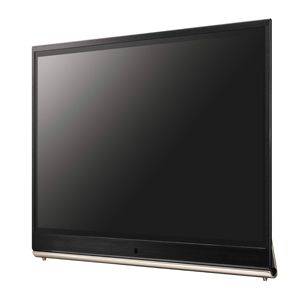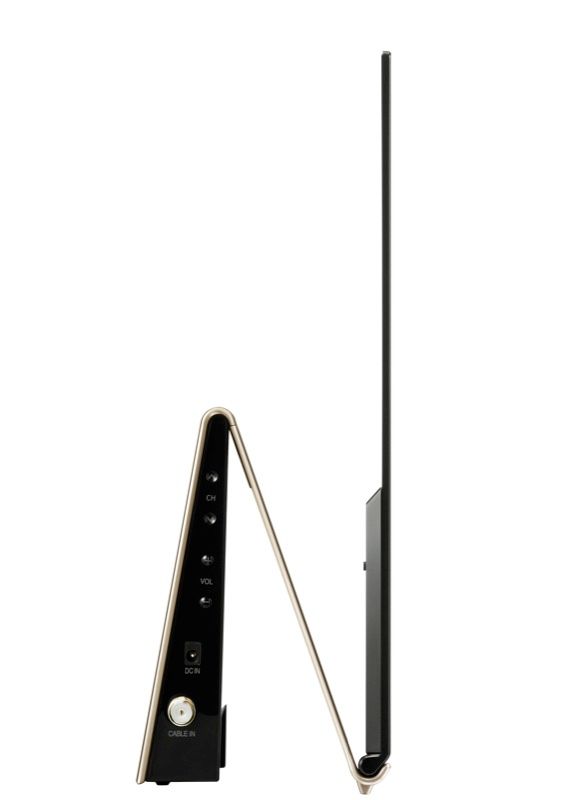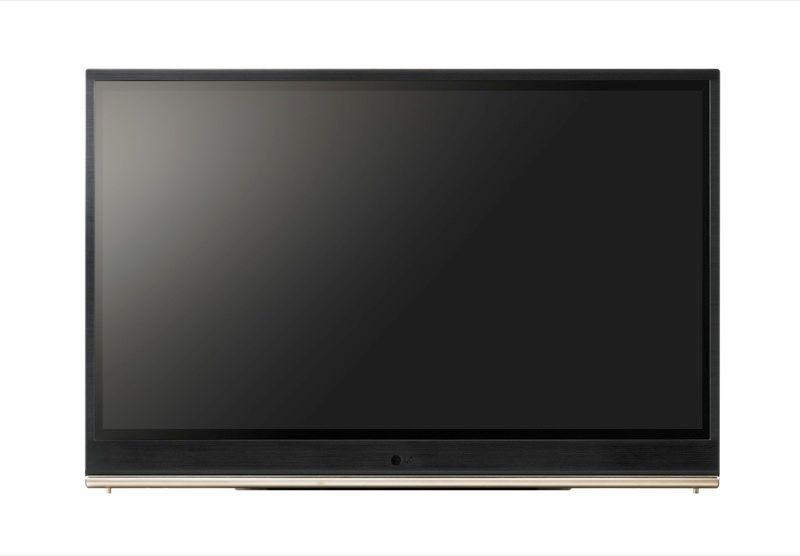Do you remember that moment about a decade ago when you realised that flatscreen TVs really weren’t even close to being flat? Banish those feelings of betrayal right now and hail the arrival of a truly flat TV - LG’s first, and Planet Earth’s biggest Organic Light Emitting Diode TV, for today at least.
Our quick take
In one of the TV coups of the year LG has both increased the size of delectable OLED technology by 4 inches (compared to Sony’s 2008 effort) and slashed the price in half. Equally as astonishing is the 15EL9500’s contrast-heavy and vividly coloured screen that’s closer to reality than anything existing tech - including 3DTVs - can offer. Beautifully engineered, the only question is: how badly do you need a luxury TV on your desk? OLED needs to upsize, and fast.

LG 15EL9500 OLED TV - 4.5 / 5
| FOR | AGAINST |
|---|---|
|
|
It’s called OLED for short, though we’ve half a mind to term it "Organic LED" to catch your attention. We’ll go into detail about how it works later, but for now sit back and marvel at the 15-inch 15EL9500; its screen is a mere 3mm deep, about the thickness of a bank card. Meanwhile, the electronics are housed in a separate box behind, so the reality is that this delectable screen cannot be wall-mounted alone - though a small mounting kit for the whole product is included in the gift box-style packaging.
We’re lucky it’s made it to the shops, because many had thought OLED technology had been stillborn. No sooner had Sony seemingly ended the OLED story earlier this year than its South Korean rival LG announced that it was going to sell the biggest OLED TV yet, with the sluggish Japanese economy - and low demand for Sony’s 11-inch XEL-1 OLED - to blame for the technology’s difficult beginnings.
We do hope OLED catches on, because despite offering just 15-inches of screen real estate, the 15EL9500 really does achieve picture quality we’ve not seen before. Well, not since we reviewed Sony’s XEL-1, anyhow.
First things first though - what exciting features are wrapped inside the ribs of the 15EL9500? There’s a Freeview tuner inside, but no extendable aerial (as seen on the Japanese version of Sony’s XEL-1) so an external aerial will need to be used. There’s also a thick power-come-aerial cable in close attendance, which could look untidy if you try to wall-mount. You can also attach a Blu-ray player using its mini HDMI input (mini HDMI-HDMI cable included), which isn’t a bad idea considering the (albeit tiny) OLED panel sports an impressive HD Ready resolution of 1366 x 768 pixels; that’s a whole bunch more than the Sony XEL-1’s non-HD 960 x 540 resolution.
Also included on the 15EL9500 is a USB slot, something that allows an external USB drive or memory stick to be connected. From there LG’s typically lush onscreen menus let you scroll between thumbnails of, and play, DivX and DivX HD (MKV) video files as well JPEG photos and MP3 music.
Picture quality from Freeview channels is dominated by the 15EL9500’s massive contrast ratio - claimed to be a million-to-one by LG. Colours fly from the screen as the image changes, with deep blacks retaining detail and displaying depth, though Blu-ray proves to be much more impressive. Even on the 15-inch screen there’s some incredible detail and the strongest, most lifelike colours we’ve ever seen. Fast action sequences don’t bother the OLED screen, either, with no blur evident thanks to a negligible panel response time and a 100Hz mode, too, though judder inherent in the source (for example, in heavily compressed DivX HD files), is still visible. What’s more, you can watch from the wings without the image draining of contrast, as on most LCD screens.

Almost completely flat and theoretically bendable, OLED technology should see some exciting new types of TV if the 15EL9500 is a success. OLED panels work by passing a current through organic material that self-illuminates, cutting out the need for as much electronic circuitry as LCD or plasma screens. The key advantage is that light leakage is totally avoided, so a pure black can be achieved.
The design of the 15EL9500 - in gloss black and brushed aluminium with the electronics box hidden upright behind the screen, allowing the TV to stand with the illusion of no support - is beautifully engineered. The 15EL9500 is likely to be the first of many for the company and both Samsung and Sony have indicated that bigger OLED TVs are in the pipeline. If the 15EL9500 is our yardstick, we can’t wait.
To recap
Beautifully engineered, the only question is: how badly do you need a luxury TV on your desk? OLED needs to upsize, and fast

